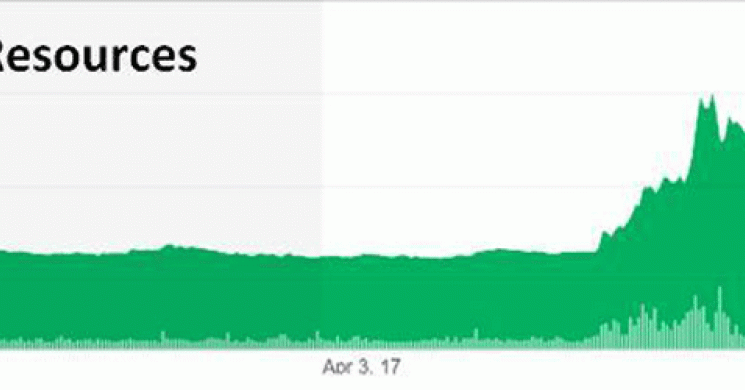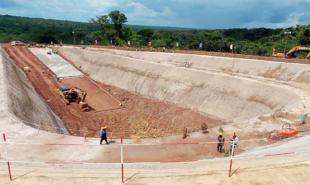
Gold mining stocks have been treading water for what seems like forever. But in a remote part of Australia, a potentially big find by a tiny exploration company is generating some welcome excitement.
The story in a nutshell: Back in the 1990s, Newmont Mining geologist Quinton Hennigh came up with a novel theory about the origin of South Africa’s immense Witwatersrand Basin gold deposit. He left Newmont and spent the next couple of decades searching for similar geologic structures that he hoped would contain similar amounts of metal.
He eventually found one in a remote part of western Australia, and formed Novo Resources to explore it.
A few more quiet years ensued. But in mid-2017 the floodgates opened as reports of serious deposits – including large numbers of gold nuggets right near the surface, documented on YouTube – caught the imagination of some heavy hitters in the gold world, turning Novo’s stock into a ten-bagger and taking several other explorers with nearby claims along for the ride.
Now lots of people are paying attention. Here’s an interview with 321gold’s Bob Moriarty, an early Novo fan:
Bob Moriarty isn’t Selling His Novo Shares
Novo Resources (TSX-V:NVO, OTC:NSRPF) shares caught rocket fuel the week after my last interview with Bob Moriarty when videos of prospectors using metal detectors at Purdy’s Reward made the rounds on the internet.
We had the pleasure to catch up with Bob a couple of days ago after he returned from an expedition to Australia to have a look at Novo’s latest discovery, Purdy’s Reward. After a 300%+ run-up in the span of a month have the shares gotten ahead of themselves? And if not, how much more upside might be available to Novo shareholders?
CEO Technician: I want to start off by saying I am not currently a shareholder of $NVO even though I recently made nearly 100% on a short term trade in the shares (in which Trading Lab subscribers were able to monitor and participate in real time). What has you so interested in Novo Resources right now?
Bob Moriarty: The key to understanding it is that the Hamersley basin is an analog of the Witwatersrand Basin; same age, and gold got there the same way. Gold got there through precipitating out of salt water. This was the theory that Quinton Hennigh came up with 24 years ago when he was a doctoral candidate at the Colorado School of Mines. He was working for Newmont and he identified six basins around the world of a similar age and he told me you could go to one of these basins and find a lot of gold.
The way they found the gold at Purdy’s Reward was really interesting because it’s completely different from Beatons Creek and the type of gold mineralization in the Witwatersrand Basin; it’s at surface, it’s very high grade, they came out with assays today. Their first bulk sample which they just released had a 67 gram/tonne average. I’ll be real candid with you, I think it’s going to be a 2 ounce per tonne average across the resource.
CEO Technician: The market was enthused by the release of the first bulk sample results, but my question is how much of this news was already priced in considering how much the stock has run up in recent weeks? And how much can we decipher about the much larger property package from a couple of bulk samples?
Bob Moriarty: We have no idea of how thick the conglomerate area is, we have no idea if the entire conglomerate area is mineralized, we have no idea what the length of the conglomerate is, we have no idea if the conglomerate extends into the basin. However, if you accept Quinton’s theory that the gold precipitated out of water and that this is a Witwatersrand analog the answer is that there’s a lot of gold and they appear to have found some very high grades. The chances of that first sample being the highest grade sample they’ll ever recover is zero; they’ve been mining that area for 110 years and you have to understand the theory to understand that they’re all connected. It’s a big deal.
CEO Technician: What are your major takeaways from your trip to Australia?
Bob Moriarty: I always want to know what the grade is and what the potential is. We went to the local gold buyer and he showed us gold from a town about 110 km away and you could look at it and tell it was absolutely identical to the gold from Purdy’s Reward. That told me that the potential is really enormous.
I said in 2012 that Novo had the potential to be a 10-bagger and at the time the shares were only C$.45 so they’re well on their way to being a 10-bagger, and the potential for being a 100-bagger is absolutely real.
Here are a couple of YouTube videos in which Jay Taylor – another early backer of Novo – interviews metals analyst John Kaiser and Novo CEO Quinton Hennigh.
In early September, Australian rising star Kirkland Lake Gold swooped in with a $56 million investment in Novo, giving this lottery ticket a huge dose of legitimacy.
And in an amusingly risky presentation to the Denver Gold Forum on September 25, Novo live-streamed from (middle of the night) Australia its geologists chipping gold nuggets directly out of rocks on its property. The stock popped by 20% over the next few hours.
This has been fun to watch, obviously. But why should anyone who’s not already a Novo shareholder care? Because one successful story breeds others by attracting capital to a sector. If Novo or one of its neighbors hits it big, then the rest of the junior space will get the kind of attention not seen since the peak of the last cycle in 2011.
Read more by MarketSlant Editor








